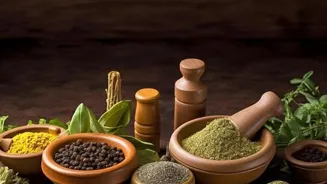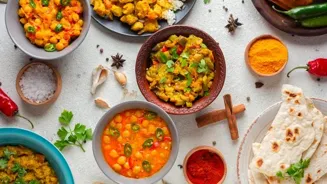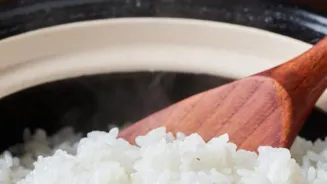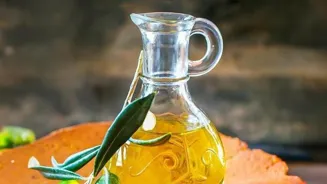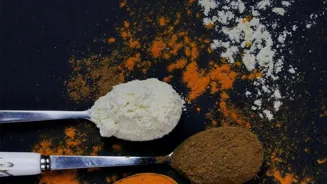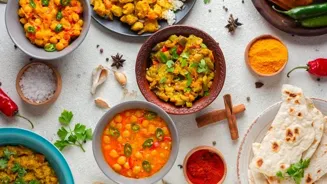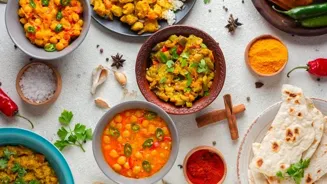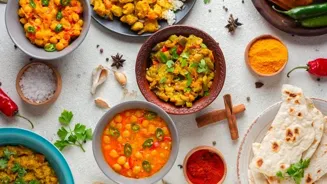Discover the secrets to perfecting Indian Biryani! Learn 7 essential techniques for a divine culinary experience. Read more!
For many Indians, and indeed, food lovers worldwide, biryani isn't just a dish;
it's an emotion. This fragrant rice preparation, layered with vegetables and aromatic spices, holds a special place in culinary hearts.
But achieving that perfect, melt-in-your-mouth biryani consistently can seem like a daunting task. Fear not! Mastering a few key cooking techniques can elevate your biryani game from good to absolutely divine.
We bring you seven essential techniques that will transform your biryani making, ensuring every grain is perfectly cooked, flavourful, and a joy to eat. So, get ready to embark on a biryani journey that will impress your family and friends alike!
Select aged basmati rice, soak, parboil for biryani success
The first crucial technique lies in selecting and preparing your rice. Basmati rice is the undisputed king for biryani, thanks to its long grains, delicate aroma, and ability to cook separately without becoming mushy. However, simply using basmati isn't enough.
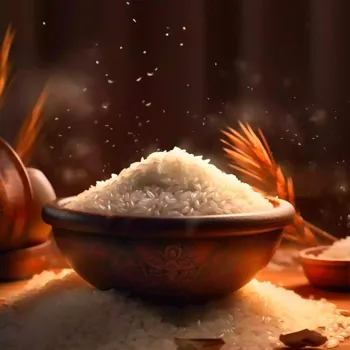
You need to choose aged basmati rice, as it contains less moisture and cooks up fluffier. Before you even think about adding it to your biryani, the rice needs a good soak. Soaking the rice for at least 30 minutes, and preferably an hour, is vital.
This allows the grains to absorb water evenly, ensuring they cook properly and retain their shape. After soaking, parboil the rice until it's about 70-80% cooked. A good test is to press a grain between your fingers – it should be soft but still have a firm core.
Drain the rice thoroughly and spread it out on a tray to prevent it from sticking together. This is a step that is very important and not to be missed in your preparation.
Layering is key to perfect biryani - create symphony of flavors in every bite
Next comes the art of layering, a distinguishing feature of biryani. Layering isn't about randomly piling ingredients on top of each other. It's about creating a symphony of flavors and textures in every bite. Imagine the base layer is where the vegetables are nestled, imbued with a rich gravy.
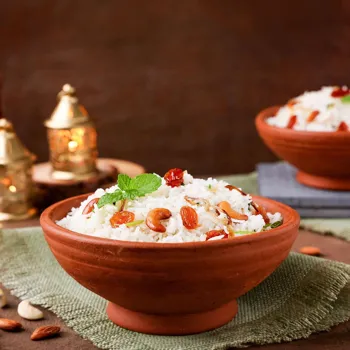
Now, consider the strategic placement of fried onions, mint leaves, coriander, and a sprinkle of saffron-infused milk between each layer of rice and vegetables. This thoughtful layering infuses the rice with the flavours and aromas of the other ingredients at different levels.
This is such as a great strategy to try and create different experiences in every bite of the biryani. It's not just about visual appeal; it's about unlocking a multi sensory experience that will elevate your biryani to new heights.
The richness of the gravy will seep into each grain of rice and the aroma will elevate the experience. So, layer wisely and savour the depth of flavors!
Dum cooking is essential for authentic biryani, creating signature aroma
The technique of 'dum cooking' is the heart and soul of authentic biryani. 'Dum' essentially translates to 'steam', and this slow-cooking method allows the flavors to meld and deepen, creating that signature biryani aroma.
The layering is gently steam cooked until the flavors are all cooked in and infuse into the biryani. Achieve this by tightly sealing the cooking pot, traditionally with dough, to trap the steam inside. Nowadays, a tightly fitting lid and a heavy object placed on top will do the trick.
Cook the biryani on low heat for a predetermined time, allowing the steam to gently cook the rice and vegetables. The duration will depend on the quantity of biryani you're making, so always keep an eye on it.
A good dum ensures that the rice is cooked to perfection, the vegetables are tender, and the flavors are beautifully combined. It's the secret element that transforms a simple rice dish into a biryani masterpiece, so don't skip this step!
Mastering the art of balancing spices in Indian biryani
Spice is the essence of Indian cuisine, and biryani is no exception. But using spices effectively goes beyond merely throwing a handful of everything into the pot. Balance is key. Start with a good quality biryani masala, which forms the base of the flavour profile.
To this, add whole spices like cardamom, cinnamon, cloves, and bay leaves, which release their aromatic oils slowly during cooking. Don't be afraid to experiment with herbs like mint and coriander, or nuts like cashews and almonds, to add depth and complexity.
Toasting your spices lightly before adding them to the gravy intensifies their aroma and flavour. Remember, the goal is to create a harmonious blend of spices that complement the vegetables, not overpower them.
Also, get to know the vegetables and understand which spices go well with them to offer your biryani the best balance of flavours.
Choose veggies wisely, prep right for flavorful biryani
The vegetables you choose and how you prepare them can either make or break your biryani. Choose vegetables that hold their shape during cooking, such as carrots, potatoes, peas, and cauliflower. Cut the vegetables into uniform sizes to ensure even cooking.
Marinating the vegetables with yogurt, ginger-garlic paste, and spices before adding them to the gravy helps to infuse them with flavor and tenderize them.
Sautéing the vegetables lightly before layering them into the biryani also adds a layer of flavour and helps to prevent them from becoming mushy. Remember, well-prepared vegetables contribute significantly to the overall texture and taste of the biryani.
The more you invest in your ingredients, the better the quality and flavor of the final biryani dish. This is a key secret to achieving the best levels of flavor in your cooking and is the secret to culinary excellence.
Patience is key to perfect biryani - rest, fluff, serve with love
Finally, patience is a virtue when it comes to making biryani. Rushing the process will only result in a subpar dish. Allow the biryani to rest for at least 15-20 minutes after dum cooking, with the lid still on. This allows the steam to settle and the flavors to meld even further.
When serving, gently fluff the biryani with a fork to avoid breaking the rice grains. And most importantly, serve with love! Biryani is a dish best enjoyed with family and friends. With these seven techniques in your arsenal, you're well on your way to perfecting the art of biryani making.
Every successful biryani is about careful preparation, skillful execution, and above all, a love for the process. And once you master the art, you’ll certainly agree that it is worth the effort!
AI Generated Content. Glance/InMobi shall have no liability for the content
